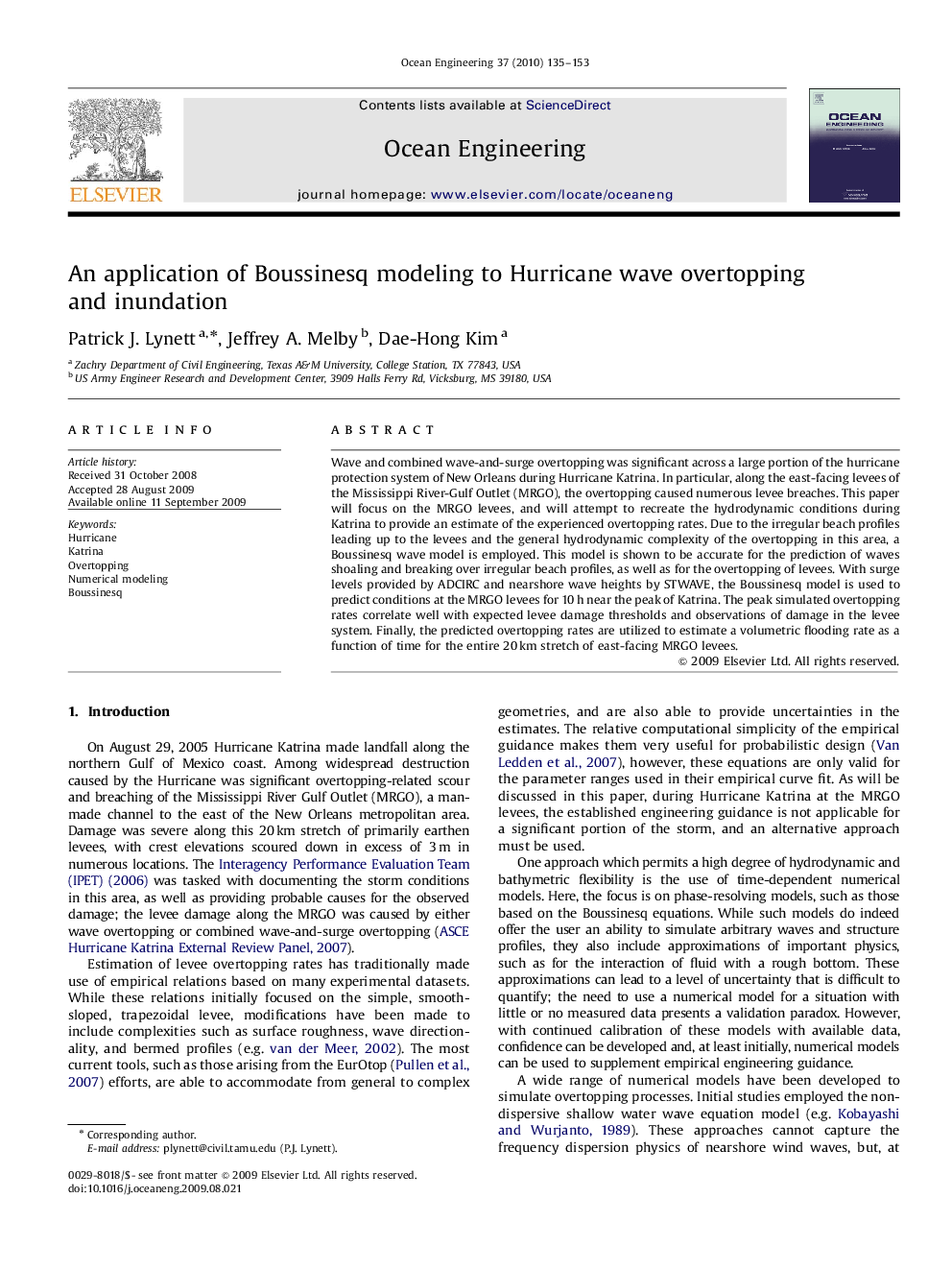| Article ID | Journal | Published Year | Pages | File Type |
|---|---|---|---|---|
| 1726917 | Ocean Engineering | 2010 | 19 Pages |
Wave and combined wave-and-surge overtopping was significant across a large portion of the hurricane protection system of New Orleans during Hurricane Katrina. In particular, along the east-facing levees of the Mississippi River-Gulf Outlet (MRGO), the overtopping caused numerous levee breaches. This paper will focus on the MRGO levees, and will attempt to recreate the hydrodynamic conditions during Katrina to provide an estimate of the experienced overtopping rates. Due to the irregular beach profiles leading up to the levees and the general hydrodynamic complexity of the overtopping in this area, a Boussinesq wave model is employed. This model is shown to be accurate for the prediction of waves shoaling and breaking over irregular beach profiles, as well as for the overtopping of levees. With surge levels provided by ADCIRC and nearshore wave heights by STWAVE, the Boussinesq model is used to predict conditions at the MRGO levees for 10 h near the peak of Katrina. The peak simulated overtopping rates correlate well with expected levee damage thresholds and observations of damage in the levee system. Finally, the predicted overtopping rates are utilized to estimate a volumetric flooding rate as a function of time for the entire 20 km stretch of east-facing MRGO levees.
